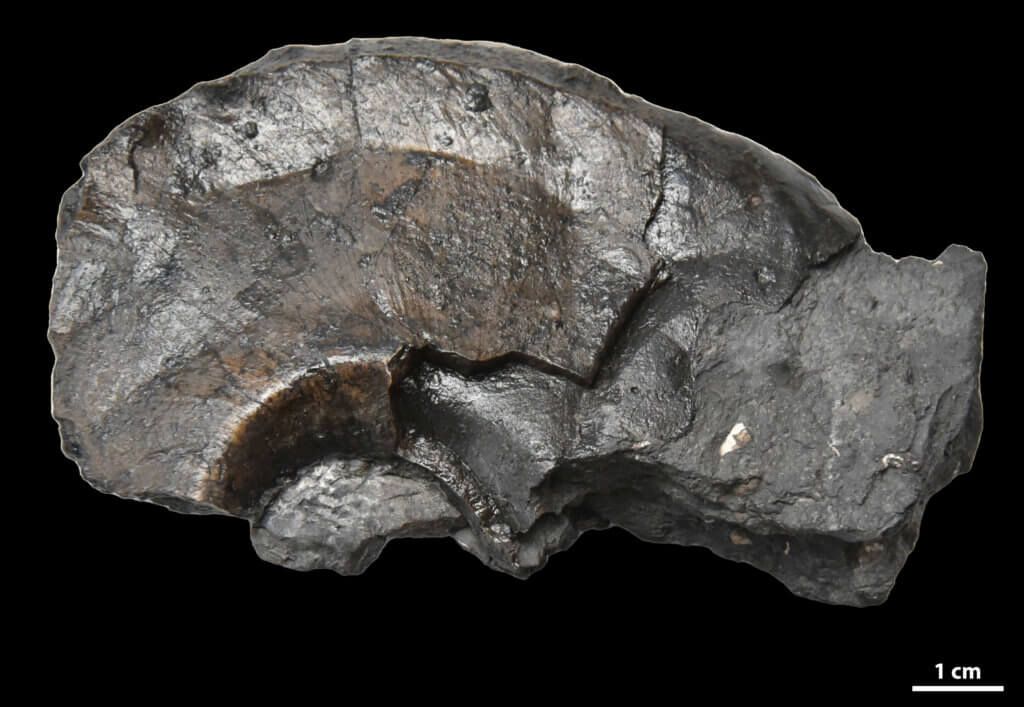Finding specimens of the paleozoic cephalopod genus Domatoceras in local rocks is difficult. They exist, but the genera Metacoceras and Pseudorthoceras dominate the cephalopod fauna. They are large cephalopods with a narrow venter. The younger whorls are only slightly or not impressed into the umbilical walls. Big shells are hard to find intact, and Domatoceras is no exception to that rule.
CG-0334 – Domatoceras sp.
Regardless, I have found a few examples, with two nicer ones showing up recently from the Pine Creek limestone. The first specimen, CG-0334, is two-fifths of a whorl, with thick shell preservation on the umbilical shoulders. The ventrolateral shoulders feature a scalloped edge. The flanks are broad and show rapid growth in the oldest whorls. In what appears to be the aperture opening, there may be a preserved aperture edge viewable. As I removed the attached matrix, I coated the entire specimen shell in paraloid to prevent breakage.
There are visible growth lines on the shell surface.
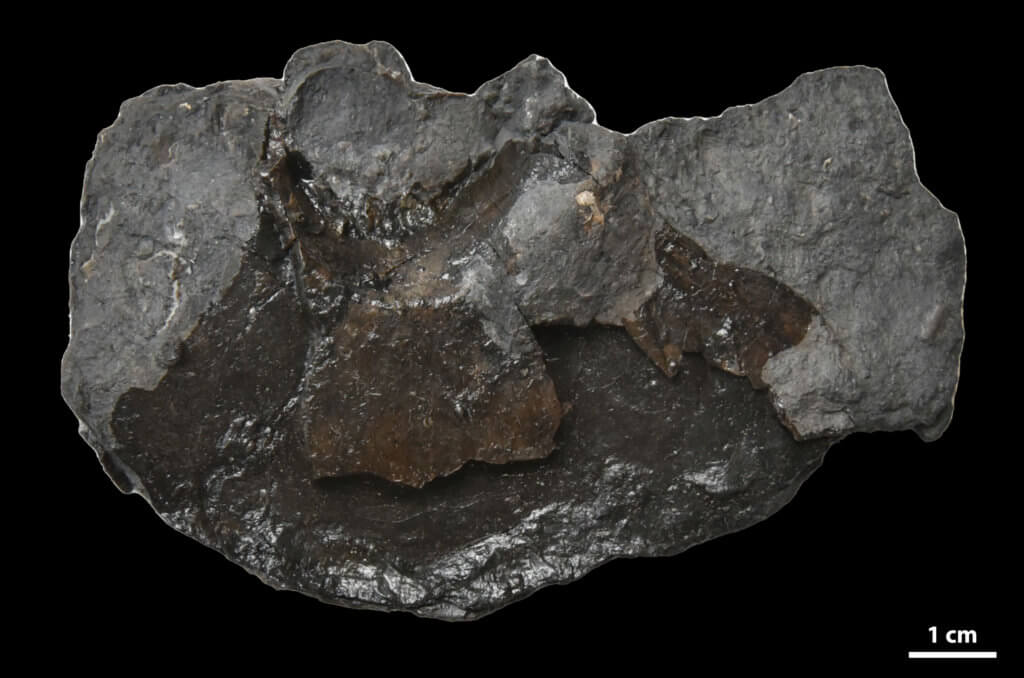

CG-0362, a Specimen with a Unique View
This specimen provides a unique view into the shell architecture of Domatoceras. I found it face down in the talus, caked in mud and debris. The shell covering of the large body chamber eroded, revealing a large flat portion of the inner shell wall. The juvenile whorls are deeply impressed into the umbilical wall, allowing you to see the umbilical area.
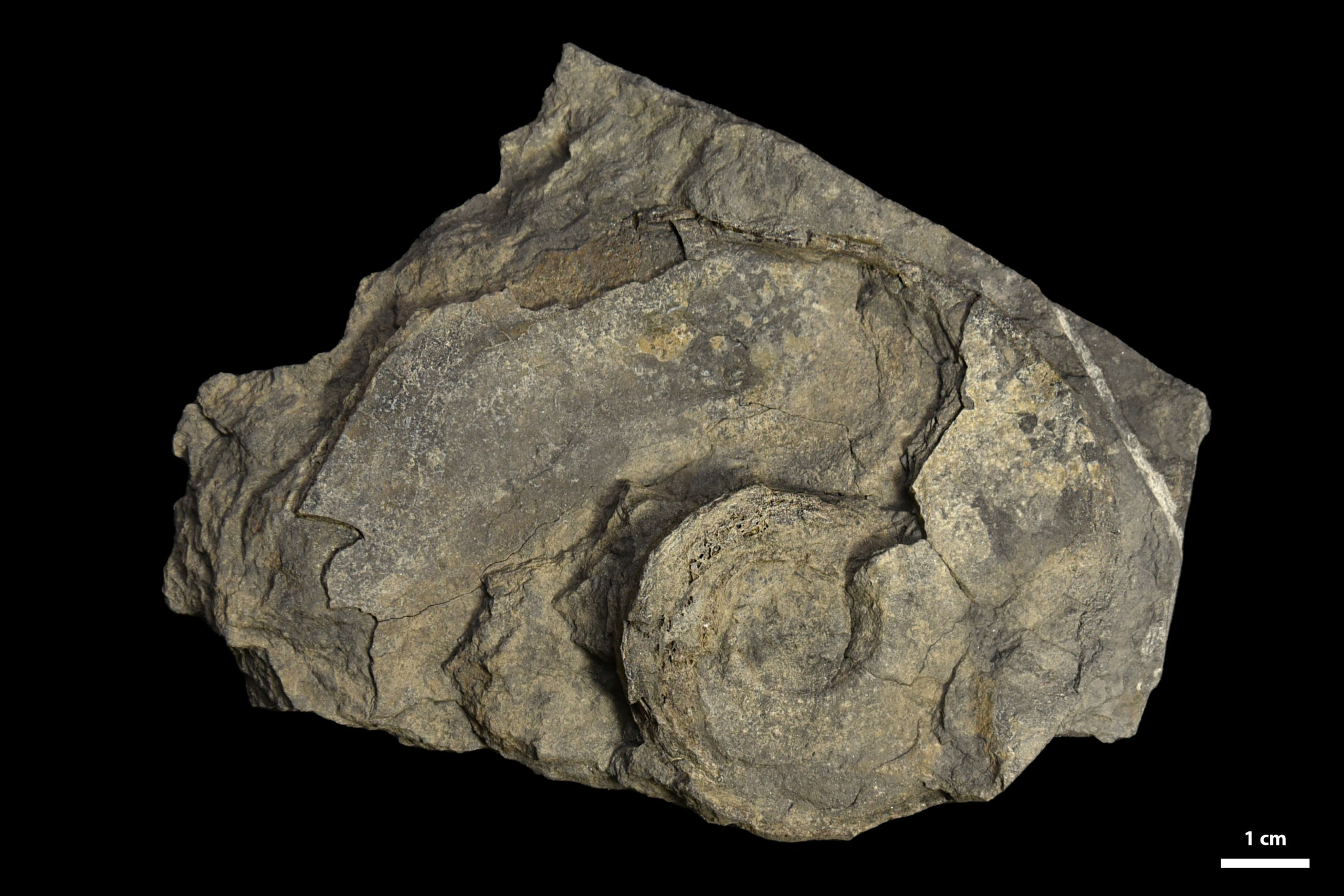
Last, I want to discuss a specimen, CG-0068, from the Brush Creek limestone. The venter is narrow, and the flank is broad. At first, I thought this was another Metacoceras, but further study has this specimen properly under Domatoceras. Unfortunately, the thick Brush Creek limestone has prevented the further study of the details in the umbilical area.
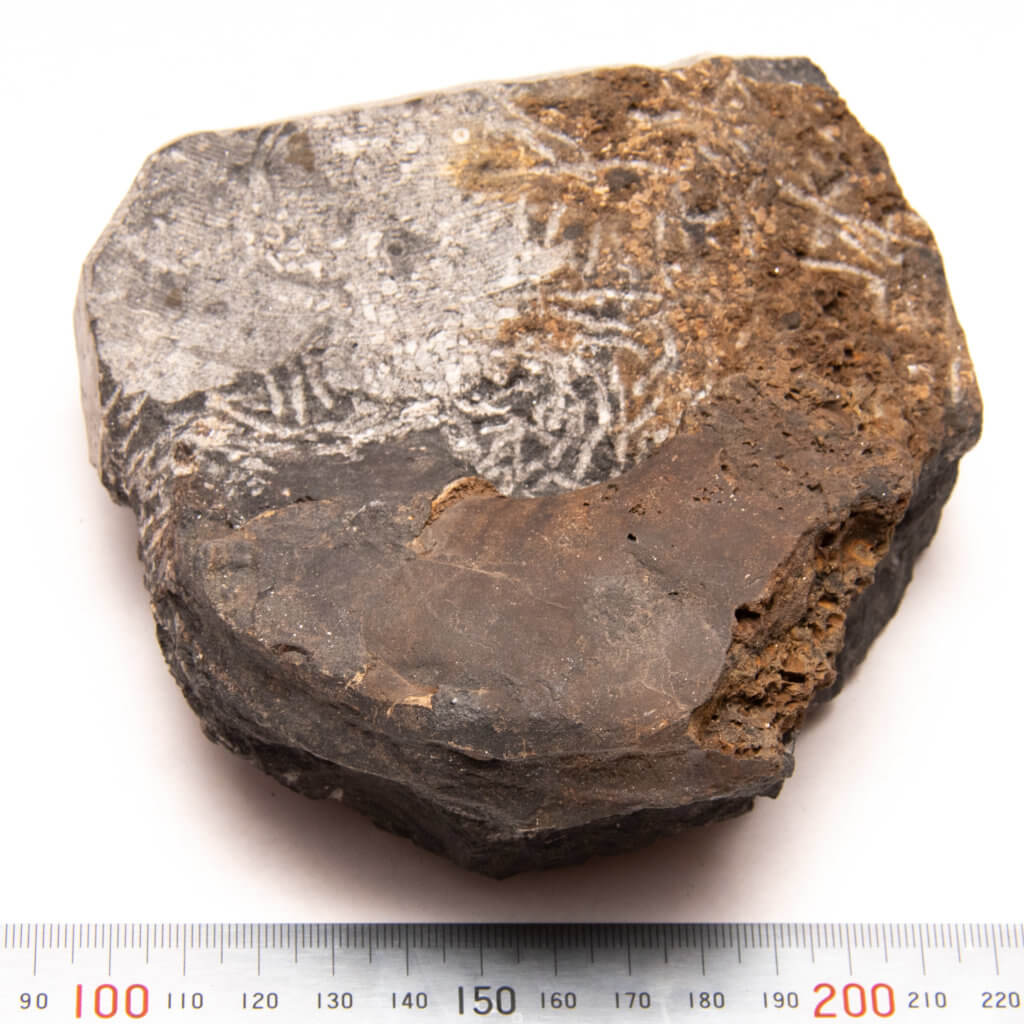
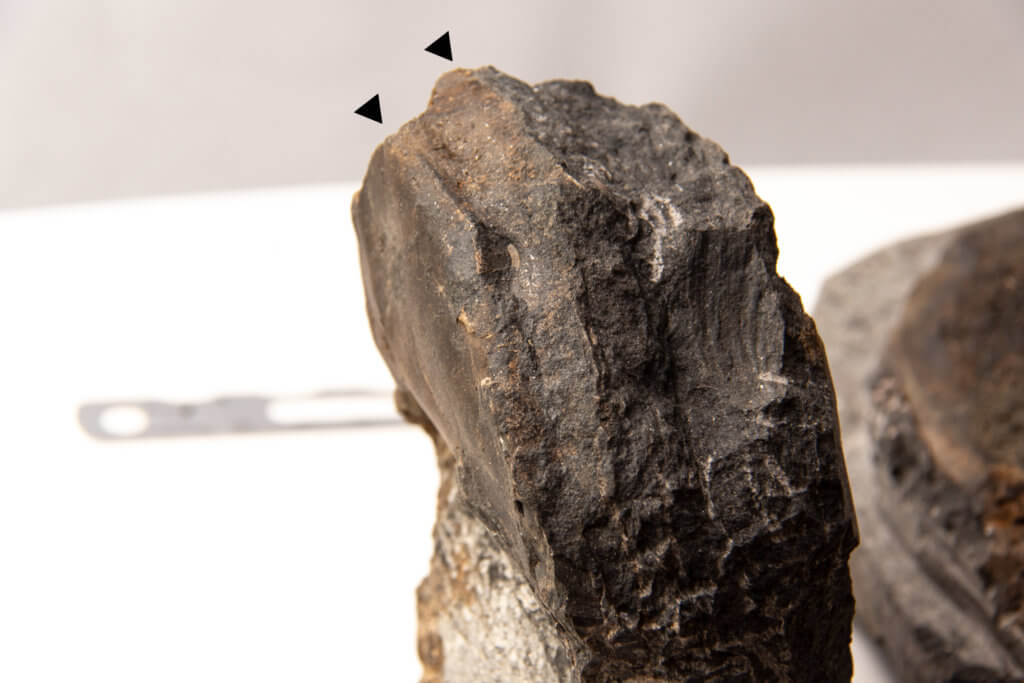
More Reading Online
- Wikipedia article on the genus.
- Pennsylvanian Atlas of Ancient Life Midcontinent United States – Genus Page
- Specimens from the Yale Peabody Museum
- Previous post about CG-0068
References
- Miller, A.K., Lane, J.H. Jr, Unklesbay, A.G., 1947, A nautiloid cephalopod fauna from the Pennsylvanian Winterset Limestone of Jackson Country, Missouri, The University of Kansas Paleontological Contributions: Article 3 Mollusca 2, Plate 5

